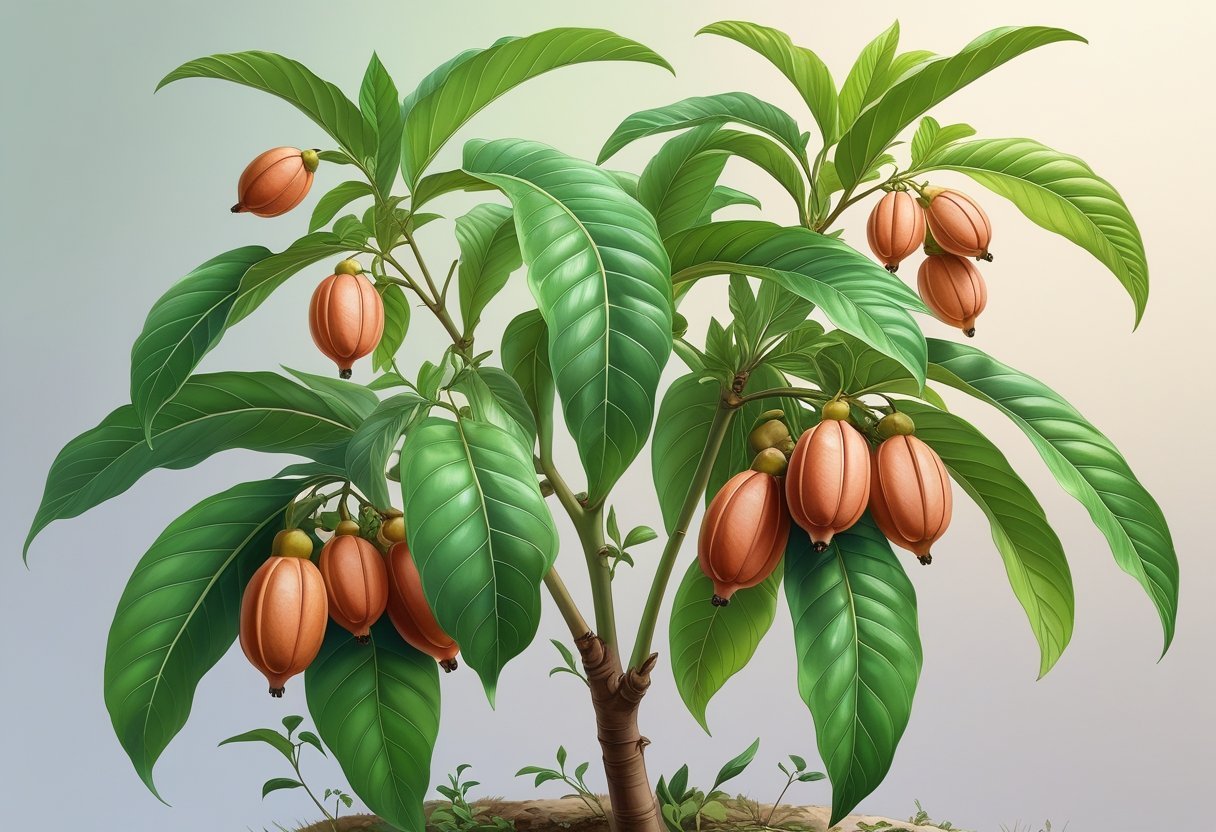Guarana, or Paullinia cupana if you want to get technical, is a wild climbing shrub from deep in the Amazon. It’s not too fussy, but it does have some strong preferences: warm, humid air, acidic soil, and plenty of support to scramble up. If you want your guarana to actually thrive, you’ll need to keep things moist, give it sunlight (but don’t roast it), and set up something sturdy for it to climb.

This evergreen vine puts out little white flowers and then bright red fruits, each holding seeds absolutely packed with caffeine. Since guarana likes to stretch out and can get pretty tall, it’s happiest with a trellis or some kind of vertical support. You’ll want to keep it trimmed and tidy, too, so it doesn’t get out of hand or put all its energy into leaves instead of fruit.
It’s a bit of a diva about its environment, honestly. But if you’re up for the challenge, you can grow guarana outside its native rainforest—just be ready to put in a bit of extra effort, especially if you’re trying it in a greenhouse or somewhere less tropical.
Key Takeaways
- Likes it warm, humid, and a bit acidic in the soil.
- Needs something to climb—don’t skip the trellis.
- Keep up with maintenance if you want decent fruit.
Essential Guarana Plant Care Requirements
Guarana’s a bit particular about its setup: you’ve got to nail the light, temperature, soil, watering, and definitely the support. If you can get those right, you’ll have a healthy, productive vine.
Light and Temperature
Guarana wants lots of light but not a full blast of midday sun. If you can give it full sun in the morning and dappled shade in the afternoon, you’re golden. The sweet spot for temperature is 20°C to 30°C (68°F to 86°F)—basically, don’t let it get chilly. If it drops below 15°C (59°F), the plant’s going to sulk and slow down. Frost? Forget it. This isn’t a plant for cold snaps or wildly changing temps.
Soil and pH Needs
Soil-wise, guarana likes it rich and loose, with a pH between 5.5 and 7.0—so, leaning acidic but not extreme. Good compost or organic matter is key for nutrients and moisture. If your soil’s heavy clay or gets waterlogged, you’ll want to amend it or use raised beds. Roots hate wet feet, and poor soil just won’t cut it. A little slow-release organic fertilizer now and then helps, but don’t go overboard—salt buildup can mess things up.
Watering and Humidity
Keep your guarana watered so the soil stays evenly moist, but don’t drown it. Overwatering is a surefire way to get root rot. It likes humidity, too—think 70% or higher, which can be tricky outside the tropics. If you’re growing it indoors or somewhere dry, misting or setting up humidity trays will help keep the leaves from crisping up.
Support and Trellising
Guarana can shoot up to 12 meters if you let it, so you’ll need a strong trellis, arbor, or something similar. Without support, the vine will flop and branches can snap. Prune it regularly as it climbs—this keeps the air moving, encourages new growth, and helps the plant focus on making fruit instead of just leaves. Plus, it’s way easier to manage when it’s not a tangled mess.
Propagation, Maintenance, and Harvesting
From starting seeds to picking ripe fruit, guarana needs a bit of hands-on care. It’s all about healthy beginnings, good soil, keeping pests in check, and knowing when to harvest so your seeds are top-notch.
Propagation from Seeds and Cuttings
Most folks start guarana from seed, but you can also use cuttings. For seeds, pick them from ripe berries, clean them up, and soak them for better sprouting. Be patient—germination can drag on for weeks, and they want it warm and moist (20°–30°C). With cuttings, grab semi-hardwood branches, dip them in rooting hormone, and stick them in acidic, well-drained soil. Either way, lots of humidity and a bit of shade at first will help them settle in.
Fertilizing and Pruning
Guarana likes its soil rich but not overloaded. A bit of compost or well-rotted manure keeps things fertile. Go easy on commercial fertilizers—stick to balanced blends with nitrogen, phosphorus, and potassium. Pruning’s a must if you want fruit. Snip off weak or sickly branches, and encourage the vine to spread along your support. Regular trims help air flow and cut down on fungus problems.
Pest and Disease Management
Fungal diseases and pests like aphids or spider mites can be a headache. Keep things breezy, don’t let the soil get soggy, and check your plants often. If you spot bugs, try neem oil or a gentle natural insecticide first. For fungus, you might need to break out a fungicide, especially if humidity’s high. Always clean your tools and clear away pruned bits—no sense giving diseases a free ride.
Harvesting Berries and Seed Viability
Guarana berries turn a striking red when they’re ready, sometimes popping open to show off those shiny seeds wrapped in white arils. I usually wait until at least half the berries look fully ripe before picking—seems to give the best flavor and caffeine kick.
After picking, don’t wait too long to get the seeds out, or you might end up with a mushy mess. If you stash the seeds somewhere cool and dry, they’ll stay good for planting. And honestly, with how much caffeine’s packed in there, it’s no wonder folks use these seeds for energy drinks and supplements.




